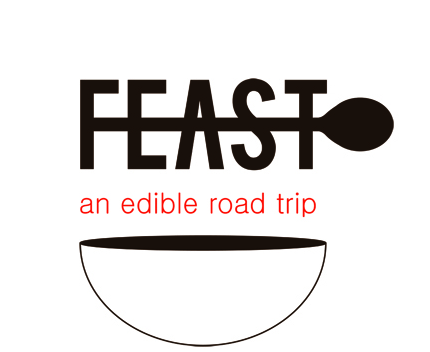Hiking The Nanaimo Bar Trail
Some of you may know that we have challenged ourselves to hike/bike/walk/run 75km per week to combat all the sitting we'll be doing in the car. It’s a lofty goal, but we’re OK with aiming high. While we were in Nanaimo, BC, Lindsay and I went on quite the grueling hike and knocked at LEAST a solid 1km off of our weekly total. How did we accomplish all this, you ask? By ‘hiking’ the Nanaimo Bar Trail, a local guide to all the hots spots in Nanaimo for this exquisite Canadian treat.
As you may have guessed, the Nanaimo Bar, a popular sweet Canadian dessert, originated in the city of Nanaimo. In response to the city’s pride, Tourism Nanaimo's Chelsea Barr (yes, that's her real name) decided to create the the Nanaimo Bar Trail in 2010. With more added each year, it currently has 28 stops and includes various edible and inedible versions. Hikers can even buy soap and get a pedicure in this Canadian dessert theme.
We spent a couple of hours talking with Chelsea as she guided us through one 'section' of the trail. We enjoyed a variety of versions of the bar including:
• A classic Nanaimo Bar from Perkins
• A latte and cocktail from Modern Café
• A deep fried Nanaimo Bar from Pirate Chips
• A Nanaimo bartini from Acme Food Co
• A gluten free version from Mon Petit Choux
• Nanaimo Bar cheesecake from Minnoz Steak & Seafood
Everything was enjoyable, but the gluten-free version actually stood out most to us. It had a touch of cinnamon and the middle layer was almost mousse-like - a pleasant twist on a classic dessert.
The exact origin of the Nanaimo Bar is elusive and a much-debated topic. Chelsea explained that, according to the research of the Nanaimo museum, a similar recipe likely came over from England and through various trade exchanges ended up in the Nanaimo region. The first (known) published recipe of a dessert featuring the particular ingredients appeared in the 1952 Women’s Auxiliary to the Nanaimo Hospital Cookbook and was called the ‘chocolate square’. The first appearance of the title ‘Nanaimo Bar’ appeared in a 1953 Edith Adams column in the Vancouver Sun.
In 1986, there was a town-wide contest in order to determine the ultimate Nanaimo Bar recipe. The contest was 4 weeks long and nearly 100 different variations of the bar were submitted. Joyce Hardcastle’s recipe was chosen, though this choice was a bit controversial because her recipe uses almonds instead of the locally available walnuts.
I highly recommend checking out some stops on the trail if you are in Nanaimo; it’s refreshing to see a city so fully embrace its food legacy. We were quite exhausted at the end of our trail, but that was likely due more to an immense sugar crash than to physical exertion.
Here is the recipe for the town’s chosen ‘ultimate’ recipe. If you’re a purist, you may want to substitute the chopped almonds for chopped walnuts:
-DV
















